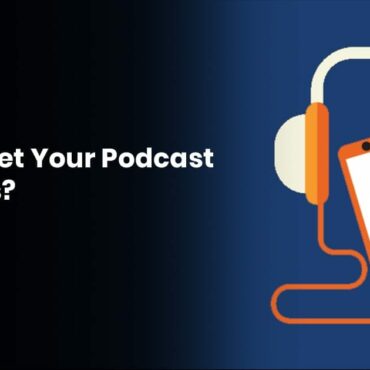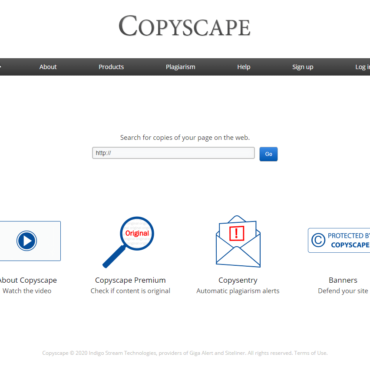Writing quality content that readers can find winsome and engaging entails meticulous planning, credible data, and the ability to relate to the interests and needs of others. Anyone can scribble meaningless fluff, but only an adept content writer is capable of providing compelling blog posts. This brief guide attempts to share surefire tips that will help you write high-quality content.
1. Know Your Audience
Building a solid foundation for any brand starts with understanding the needs of your audience. It’s impossible to deliver the desired output if you have no idea what the audience desires, right? You also want to be completely engrossed in your industry. Put differently; you have to know all the ins and outs of your industry to be up to date on what’s hot and what’s not.
One of the best ways you can go about curating engaging content is by subscribing to a reliable curation tool such as Scoop.it, Triberr, and Pearltrees. And while you can rely on manual efforts to curate content, we wouldn’t really recommend it because it’s insanely time-consuming. We’re quite fond of content curation platforms, and you should be too!
Another way you can go about knowing what your audience wants is to visit popular Q&A sites such as Quora and Yahoo! Answers and look for unresolved questions that your audience may resonate with. Take those unresolved concerns and base an extensive blog post around them. No matter the topic that you’d like to cover, platforms such as Quora will surely be of help.
2. Link Trusted Sources
When writing website content, it’s important that you support everything you’re writing in order to build trust with the readers and for them to deem the data you’re providing as credible. This also keeps your credibility ramparted against the firing squad for when they come shooting questions at you, as they can now redirect their attention to referenced sites and pages.
There’s another way you can solidify your credibility while still maintaining the reader’s attention in order to increase dwell time, and that’s turning to video, rather than other people’s articles or posts. By using video as a means of backing your data up with sources, you help keep readers engaged while still garnering their attention in your favor. Learn how to embed videos here.
3. Spy On Competitors
Sooner or later, you’ll find yourself running out of ideas and words. You can either sit there and wait for a new topic to hit you, or you can spare yourself of wasted time and comb through some of your competitor’s articles to scavenge some ideas. However, you don’t want to emulate what your competitors are doing; rather, you want to find out what’s missing and use it in your favor.
A great way you can go about using your competitors’ content to inspire yours is to eye-out their comment sections for unanswered questions or unresolved issues. Once you’ve pinpointed your target, begin writing blogs that are geared towards answering these unanswered questions and resolving these unresolved issues, while improving upon your competitors’ research.
4. Magnetic Headlines
Most of the time, the headline to your article is the only impression you make on readers, which stems from the fact that most writers tend to focus on the what and neglect the why. You have to use compelling titles that offer the reader a reason to continue reading the rest of the article. But must keep in mind that your content has to deliver on the title’s promise or you’d be click bating.
How do you know whether your headlines are compelling or mundane? Utilize the CoSchedule Headline Analyzer. You should also keep in mind that the primary headline to your article should contain the main keyword. Throughout the article, you have to try your best to tie your content back to the primary keyword/goal of the article so that audiences don’t feel lost or lose interest.
5. Avoid Generic Intros
One of the biggest mistakes that a lot of content writers tend to do, especially when it comes to buying guides, is that they start their guides with statements that revolve around the importance of the topic or product they’re tackling. The intro to your article should get the reader interested in sticking around and reading the whole thing, while still providing as much value as possible.
6. Readable Formatting
It’s important to know that most people tend to scan their way through posts rather than take the time to read each line. A study conducted by Microsoft indicates that the average attention span of a human being today is 8 seconds, which is shorter than the attention span of Goldfish, which also means that your post should be formatted in such a way that helps keep readers engaged.
Here are some useful tips:
- Avoid the Dreaded Wall of Text – Try reading an extra-long wall of text and then try reading one that’s short and to the point. Now, ask yourself which one offered didn’t make you feel estranged. A wild guess: the shorter one!
- Bullet Points and Numbered Lists – The use of bullet points and numbered lists allows for more skimmable content. It also helps readers get the gist of things.
- Utilize Bold Headers/Subheaders – Posts that don’t feature bolded headers and subheaders tend to feel pretty stale and confusing. Headers and subheaders are great assists when it comes to breaking up text.
7. Actionable Content
The realm of content writing is based on non-fiction, meaning that your readers expect to come out of reading your posts with practical advice. One of the mistakes that content writers tend to make is that they end up sounding like they’re degrading their audience and pointing out things that they may not know, which happens due to the lack of actionable statements.
As you’re writing your informational segments, make sure you share applicable advice that your readers can use to learn and become better at the topic at hand. Another thing you may want to do is make a call to action at the end of your blog post so that you induce your readers to tackle the topic at hand from a practical standpoint.
8. Utilize LSI Keywords
In a nutshell, LSI or Latent Semantic Indexing keywords are words that are highly correlated to a certain topic. These words can be anything from synonyms to substitutions. Why should you use LSI keywords? The quality and relevance of your content are dictated by Google’s algorithm based on the use of LSI keywords, so you can use them to rank higher for your keyword.
Google’s algorithm aside, the use of synonyms and substitutions that are related to the topic at hand helps prevent redundancy. If you keep using the same words over and over again, you’re bound to put your audience to sleep. The use of LSI keywords helps create variety, add interest, and increase your post’s ranking. Check out this guide on finding and using LSI keywords.
9. Edit Your Content
Now that you’ve completed writing your first draft, it’s time to go back and sandblast those rough edges that may have escaped your attention while writing. One of the ways to pinpoint some of those rough edges is to read your own content out loud. You’re most likely going to feel different about certain parts of your post upon receiving them audibly than you did before.
Wrapping Up
With the aid of the information and tips provided in this article, the process of writing high-quality content that compels your readers and boosts your brand should be a lot less challenging. What are some other tips that you find helpful when writing quality content for your website?








